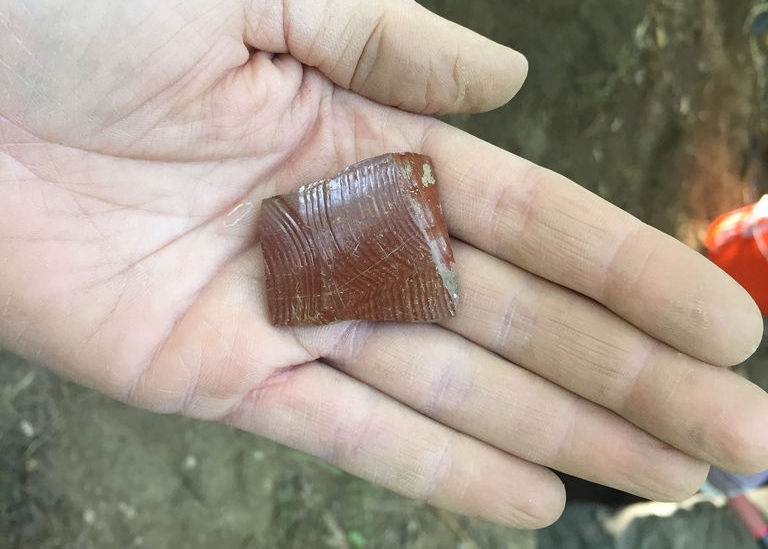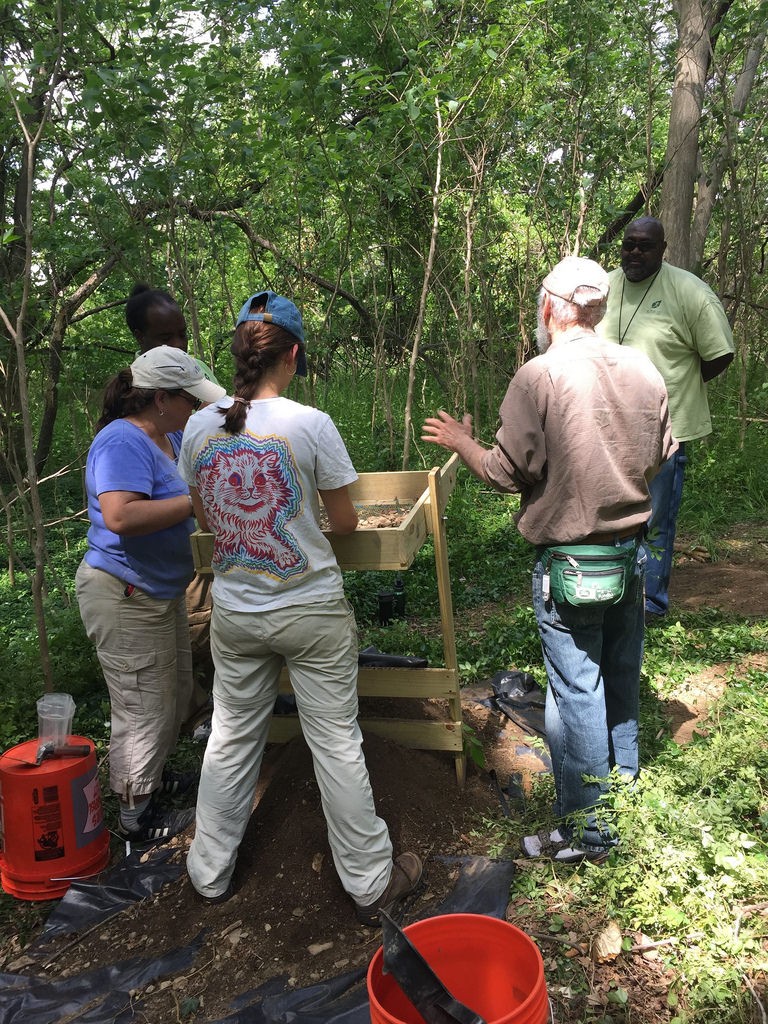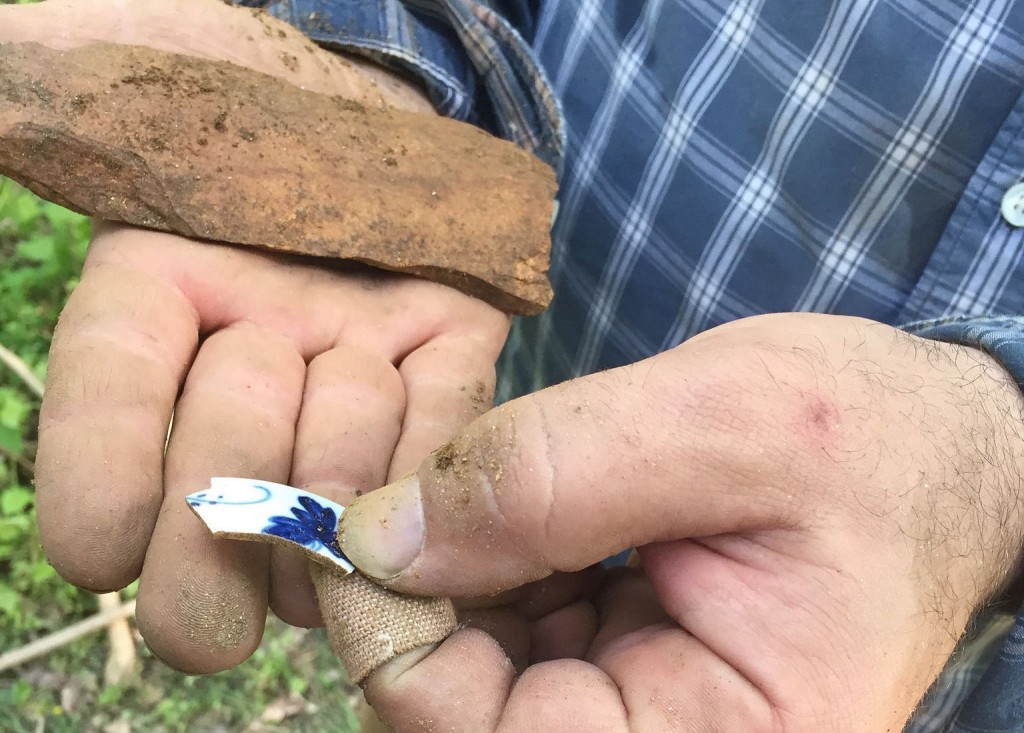Here is the latest update from Lisa Kraus and Jason Shellenhamer on our archaeological dig at the Eutaw Manor and Mill complex in Herring Run Park. Read on for Lisa and Jason’s journal entry from Tuesday, May 12, 2015 or look back at past entries from Monday and Sunday.
Today we continued our investigation of the earlier historical occupation of the site to the south of the Eutaw House cellar, and expanded the excavation to the west, in order to explore the area between Eutaw House and the Eutaw Mill.

The southern portion of the site continues to yield somewhat earlier artifacts than those recovered from the Eutaw cellar. Today, volunteers Megan Cooke, Sara Sette, Irene Smith, Kasey Johnson, Eva Schneiderman and Patty Dowd got to work and made some great discoveries, including a lovely piece of Nottingham-type stoneware (ca. 1690-1790) and a flat brass trouser or cuff button. Today’s efforts continue to point to an earlier dwelling somewhere nearby.
Meanwhile, Jason, aided by volunteers Jody Landers and Curtis Waters, began to explore the area north and west of the Eutaw House foundation. This area appears to have been open space during the occupation of Eutaw House (ca. 1760-1865), and the artifacts recovered are mostly domestic trash that date to that time period, and included a huge fragment of animal bone and the dainty rim of a blue and white porcelain teacup. Although we had fewer artifacts from these units, they provide important information about the way buildings and open spaces were arranged while the site was in use 150 years ago.

In the afternoon, volunteers Sarah, Eva, Ellen, Megan, Gene and Curtis helped investigate the western part of the site. Here we found more artifacts that seem to relate to the occupancy of Eutaw House, along with several that dated earlier. One exciting small find was a tiny piece of Tin-Glazed Earthenware, also known as Delftware, which had a long period of manufacture, but was most popular from the late 1600s through the late 1700s.
We also discovered further evidence of a prehistoric Native American presence on the site, but we’ll share more about that in our next post. Until then, many thanks to our enthusiastic volunteers and to everyone who stopped by to visit us today!


